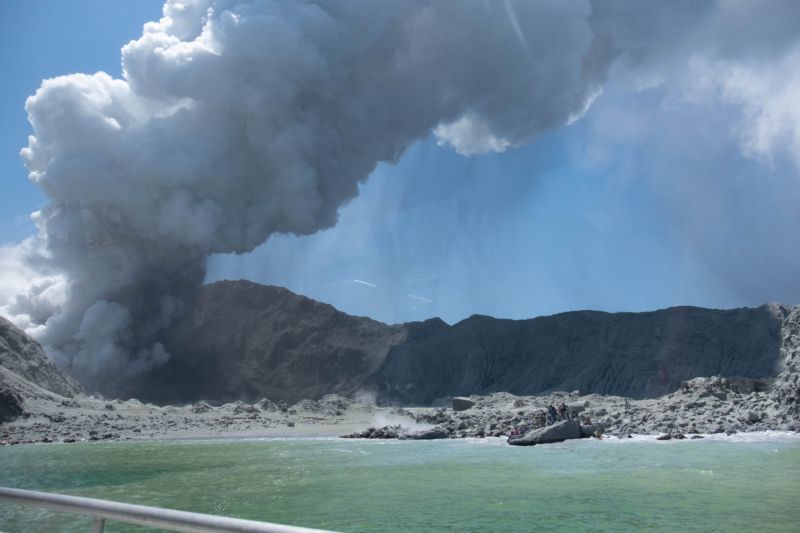New Zealand volcano erupts, killing tourists on the island

Monday was a tragic day at New Zealand’s White Island, as the volcano that forms the popular tourist destination erupted. Of 39 people taken off the island after the eruption, five died. About eight more people are missing, but police have seen no signs of remaining survivors.
Checked photo timestamps. Last photo from me standing on the land was 13:49; this first photo of the eruption was 14:12, about a minute or two into the eruption. pic.twitter.com/hyqQuO4vNq
— Michael Schade (@sch) December 9, 2019
White Island (also known as Whakaari) is located about 50 kilometers (30 miles) from the country’s North Island and is the exposed summit of a stratovolcano that rises from the seafloor. Stratovolcanoes are prone to violent eruptions, as the chemistry of their magma makes it viscous, bottling up gas pressure.
New Zealand sits on a complex set of tectonic plate boundaries, including a subduction zone where the Pacific seafloor is colliding with and sliding beneath the North Island. Water released from the Pacific Plate deep below the surface allows mantle rock to melt, producing magma that rises up to fuel volcanoes like White Island.
White Island is volcanically active—that was its appeal. Sulfur was mined there in the past until a deadly slope failure in 1914. Its fumaroles are active enough that visitors wear gas masks to avoid breathing the acrid sulfur gas. The volcano’s summit crater was easily accessible on foot as the rim is missing on the eastern side, where the old mining operation was based.
The island is still privately owned and has long seen tours brought in by boat. Although volcanic activity on the island occasionally flares up—there were minor eruptions in 2012 and 2016—tours have generally carried on uninterrupted (save for weather).
In a sadly prescient post, volcanologist Erik Klemetti wrote about his discomfort with this situation in 2012. “By making the visits to the White Island crater seem routine, it can lull the tour operators and tourists into a false sense of security, much like what happened with Stanley Williams and the other volcanologists who visited the crater of Galeras in January 1993,” he wrote. “Will it take a half-dozen deaths at White Island to change the culture, or is that merely the cost of being adventurous?”
GeoNet, New Zealand’s agency for geological hazard warnings, had posted several status updates on increased activity at White Island over the past month. They monitor the volcano in several ways, including measurements of volcanic gases, small earthquakes in the volcano’s guts, and minute surface deformation that can reveal a volcano inflating with magma.
Sulfur gas output had increased in recent weeks, with a little more seismic activity happening as well. These things pushed the alert level up to 2 (out of 5). But volcanoes are complex and unpredictable systems, and such rumbling doesn’t always mean an eruption is imminent. The most recent GeoNet update, from December 3, noted, “Overall, the monitored parameters continue to be in the expected range for moderate volcanic unrest and associated hazards exist. The monitoring observations bear some similarities with those seen during the 2011-2016 period when Whakaari/White Island was more active and stronger volcanic activity occurred. Observations and data to date suggest that the volcano may be entering a period where eruptive activity is more likely than normal.”
My god, White Island volcano in New Zealand erupted today for first time since 2001. My family and I had gotten off it 20 minutes before, were waiting at our boat about to leave when we saw it. Boat ride home tending to people our boat rescued was indescribable. #whiteisland pic.twitter.com/QJwWi12Tvt
— Michael Schade (@sch) December 9, 2019
In this case, the eruption came without further warning signs from the volcano. A plume of ash rose roughly 3,700 meters (12,000 feet) after it exploded from the crater vent, and activity has since subsided. Aviation warnings kicked in to keep planes clear of the ash, which can destroy engines, and the ashfall is not expected to be significant on the mainland. But the story on the island itself was already grim.
https://arstechnica.com/?p=1630313